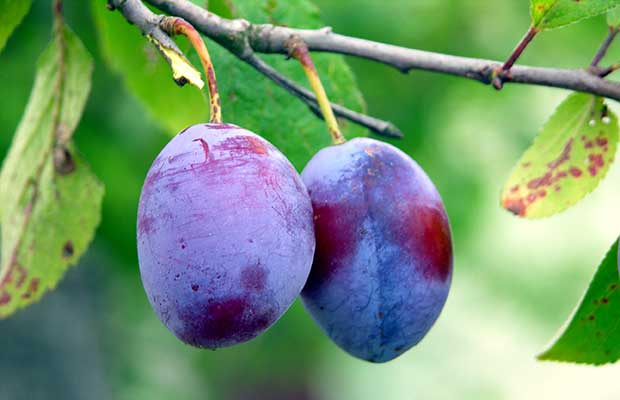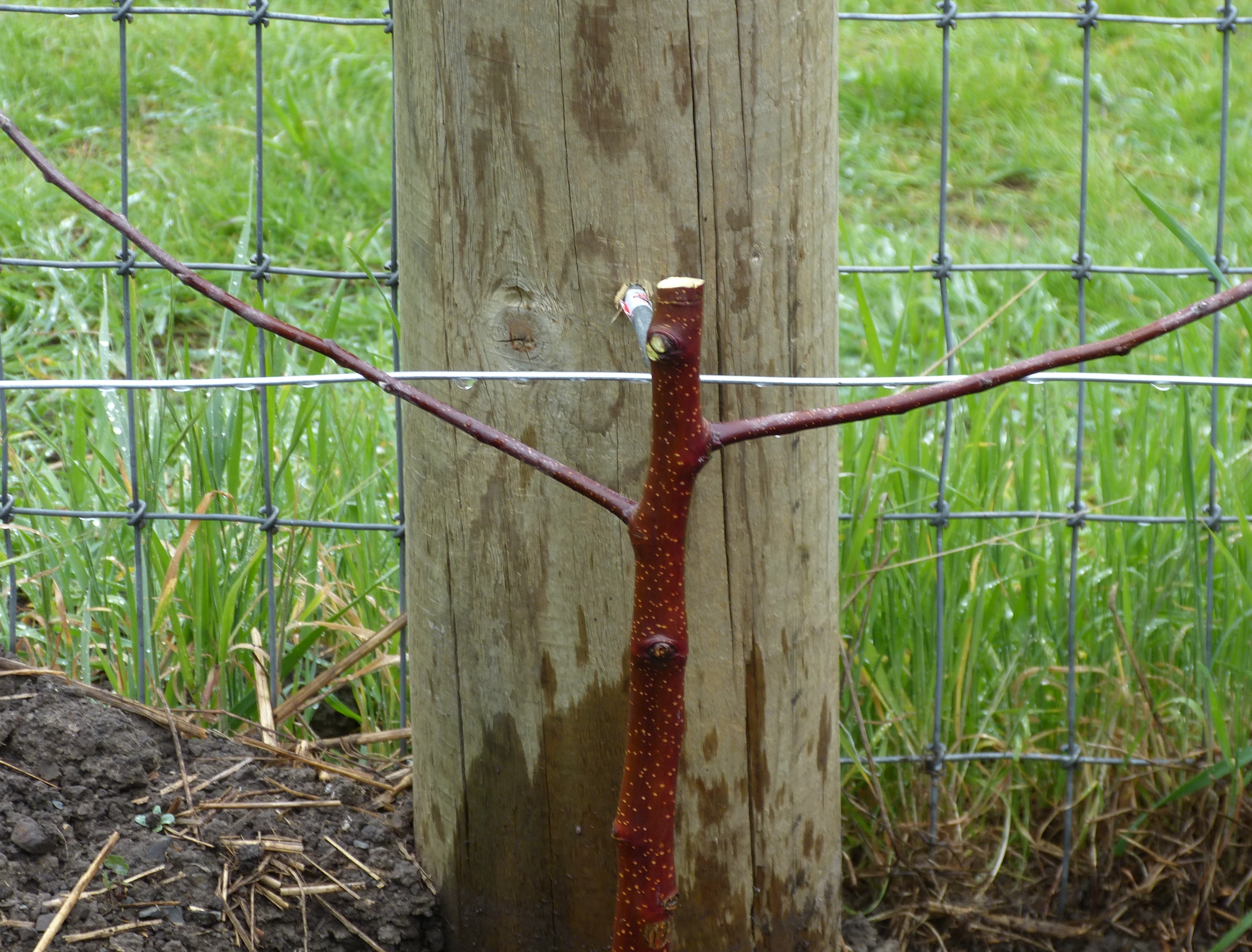Grafting fruit trees is the process of joining the cambium layer of the rootstock and scion for fruit production. It is typically done in the dormant season or late summer, using different techniques to achieve successful grafting.
Grafting allows multiple fruit varieties to grow on one tree and can rejuvenate old trees with new, desirable fruit. The benefits of grafting include increasing fruit diversity and improving fruit quality. By learning the art of grafting, individuals can create designer fruit trees and make the most out of their home orchard.
This technique not only enhances the aesthetic appeal of the orchard but also promotes genetic exchange, leading to more abundant harvests. Whether for commercial production or personal enjoyment, grafting fruit trees is a rewarding horticultural practice with endless possibilities.
Credit: thisnzlife.co.nz
Introduction To Grafting Fruit Trees
Grafting fruit trees is a centuries-old technique used to propagate and cultivate specific varieties of fruit. This process involves joining the tissue of two compatible trees to grow as one, allowing the desirable traits of the donor tree, known as the scion, to be passed on to the rootstock tree. Grafting is a fundamental practice in fruit tree cultivation and is utilized for creating new varieties, improving disease resistance, and enhancing fruit quality.
What Is Grafting?
Grafting is the process of joining a scion, which carries the desired fruit-producing traits, to the rootstock of another tree. This technique allows for the propagation of specific fruit varieties and enables the cultivation of multiple varieties on a single tree. The scion and rootstock are carefully selected for compatibility to ensure successful integration and optimal fruit production.
Benefits Of Grafting
- Grafting allows for the propagation of specific fruit varieties.
- It enables the cultivation of multiple varieties on a single tree.
- Helps in improving disease resistance and enhancing fruit quality.
History Of Grafting
Grafting has been practiced for thousands of years, with evidence of its use dating back to ancient civilizations such as the Romans and Egyptians. The technique has evolved over time, leading to the development of various grafting methods and tools to improve success rates. Today, grafting remains an essential practice in fruit tree cultivation, playing a significant role in the creation and preservation of unique fruit varieties.
Understanding The Basics Of Grafting
Grafting, the process of joining a scion from one tree onto the rootstock of another, has been practiced for centuries and is an essential skill for fruit growers. Understanding the basics of grafting is crucial for creating successful and productive fruit trees. Whether you are a beginner or an experienced grafter, mastering the fundamentals of grafting is the key to creating healthy and fruitful trees.
Definition Of Rootstock And Scion Wood
Rootstock refers to the lower part of the grafted tree, which provides the root system and the desired characteristics like disease resistance or size control. On the other hand, scion wood is the upper part of the graft, contributing the desired fruit variety or special traits.
Grafting Tools And Techniques
Successful grafting heavily depends on utilizing the right tools and techniques. The right tools such as grafting knives, budding knives, and pruning shears ensure clean and precise cuts, while techniques like whip and tongue grafting, cleft grafting, and budding are commonly used for different types of trees.
Best Time For Grafting
Grafting is ideally performed during the dormant season, usually in winter when plant growth is minimal. For bud grafting, however, late summer is preferred. This timing is crucial for ensuring the best chance of successful graft union and subsequent tree growth.
Step-by-step Guide To Grafting Fruit Trees
Learn how to graft fruit trees with this comprehensive step-by-step guide. From pruning the rootstock to sealing the graft, you’ll discover the techniques needed to create your own designer fruit trees. Find out the best time to graft and how grafting can transform the quality of your fruit harvest.
Grafting fruit trees is a technique that allows you to combine the desired characteristics of different varieties onto a single tree. This guide will take you through the process step-by-step, from pruning the rootstock to protecting the graft. Let’s dive in and learn how to graft fruit trees!Pruning The Rootstock
The first step in grafting fruit trees is to prune the rootstock. This involves removing any branches or shoots that are not needed for the graft. By pruning the rootstock, you create a clean and open space for the graft to be attached. Here’s how to prune the rootstock:- Identify the main trunk of the rootstock.
- Remove any branches or shoots growing below the grafting point.
- Ensure that the remaining branches are evenly spaced and well-positioned for grafting.
- Make clean cuts using sharp pruning shears or a pruning saw.
Prepping The Scion
Once the rootstock is pruned, it’s time to prepare the scion. The scion is the portion of the plant that carries the desired fruit variety. To ensure a successful graft, it’s important to properly trim and shape the scion. Follow these steps to prep the scion:- Select a healthy and disease-free scion from a tree that produces the desired fruit.
- Remove any leaves or buds from the scion, leaving only a few at the top for growth.
- Trim the lower and upper end of the scion, creating a flat surface on both ends.
- If the scion is thicker than the rootstock, use a grafting knife to taper the sides to match the rootstock.
Aligning And Sealing The Graft
With the rootstock pruned and the scion prepped, it’s time to align and seal the graft. This step ensures that the scion and rootstock are securely bonded together, allowing for the transfer of nutrients and growth. Follow these steps to align and seal the graft:- Place the flat end of the scion onto the flat surface of the rootstock, aligning them as closely as possible.
- Secure the graft with grafting tape or rubber bands, making sure it is tight enough to hold the two pieces together.
- Apply grafting wax or a sealing compound to the ends of the scion to protect them from drying out.
- Ensure that the graft is well-sealed and protected from moisture and pests.
Protecting The Graft From Drying Out
To ensure the success of the graft, it’s important to protect it from drying out. This can be achieved by providing the right conditions for growth and preventing moisture loss. Here are some tips to protect the graft from drying out:- Keep the graft site moist by watering the tree regularly, especially during dry periods.
- Apply a layer of mulch around the base of the tree to retain moisture and regulate temperature.
- Avoid excessive pruning or cutting near the graft site to prevent damage.
- Monitor the graft regularly for signs of drying or damage and take appropriate action if needed.
Credit: m.facebook.com
Different Grafting Techniques
Grafting fruit trees involves several different grafting techniques that are used to combine the rootstock with the desired scion. Each technique has its own unique process and benefits. Let’s explore the various grafting techniques:
Cleft Graft Technique
The cleft graft technique involves creating a slit in the rootstock and inserting a wedge-shaped scion into the cut. This method is commonly used for trees with larger diameters.
Bud Graft Technique
In the bud graft technique, a single bud from the desired scion is inserted into a T-shaped cut on the rootstock. This method is often used in late summer and is ideal for trees with smaller diameters.
Whip And Tongue Graft Technique
The whip and tongue graft technique involves creating matching diagonal cuts on both the rootstock and scion, forming interlocking tongues for a secure fit. This method is versatile and allows for a strong union between the two parts.
Expanding Your Orchard With Grafted Fruit Trees
Enhance your orchard by grafting fruit trees to enjoy bountiful varieties on a single tree. Learn the techniques for successful bud grafting and enjoy a fusion of different fruits, like apples, pears, cherries, plums, and peaches, all on one tree.
Discover the art of grafting to transform and elevate your fruit tree yields.
What Trees Can Be Grafted Together?
You can have multiple varieties of apple on one tree, or combine cherries, plums, and peaches on a “fruit cocktail” tree. Transform an old apple tree by grafting new buds for quality apples.
Creating Unique Fruit Combinations
Experiment with grafting to create one-of-a-kind fruit combinations, enhancing the diversity in your orchard. Elevate your harvest by crafting unique hybrid fruits through grafting techniques.
Adding New Varieties To Your Orchard
Enrich your orchard by introducing new fruit varieties through grafting. Ensure a well-rounded collection of fruits with different flavors and textures by incorporating diverse grafting techniques.
Credit: ucanr.edu
Frequently Asked Questions On Grafting Fruit Trees
What Fruit Trees Can Be Grafted Together?
Fruit trees like apples, pears, cherries, plums, and peaches can be grafted together. You can even graft new buds onto old trees for better quality fruit. Grafting should be done in the dormant season or winter, with bud grafting in late summer.
What Is The Best Time To Graft Fruit Trees?
The best time to graft fruit trees is usually during the dormant season in winter. However, bud grafting is typically done in late summer. Grafting allows you to combine different varieties of fruit on one tree, creating a “fruit cocktail” tree or improving the quality of an existing tree.
Grafting can be a fun and rewarding activity for your home orchard.
Does Grafting Change The Fruit?
Grafting can change the fruit by merging different varieties onto one tree for unique results.
How Do You Graft A Tree For Beginners?
To graft a tree for beginners, prune the rootstock and trim the scion ends. Make a wedge in the scion and align it with the rootstock. Seal the graft with wax.
Conclusion
Grafting fruit trees is a fascinating technique that allows you to create unique and diverse trees in your orchard. With grafting, you can combine different varieties of fruits on a single tree, resulting in a “fruit cocktail” tree. Whether you want to improve the quality of your existing apple tree or experiment with new flavors, grafting offers endless possibilities.
By following the step-by-step process and using the right tools, you can successfully graft fruit trees and enjoy the benefits of multiple varieties on one tree. Happy grafting!


